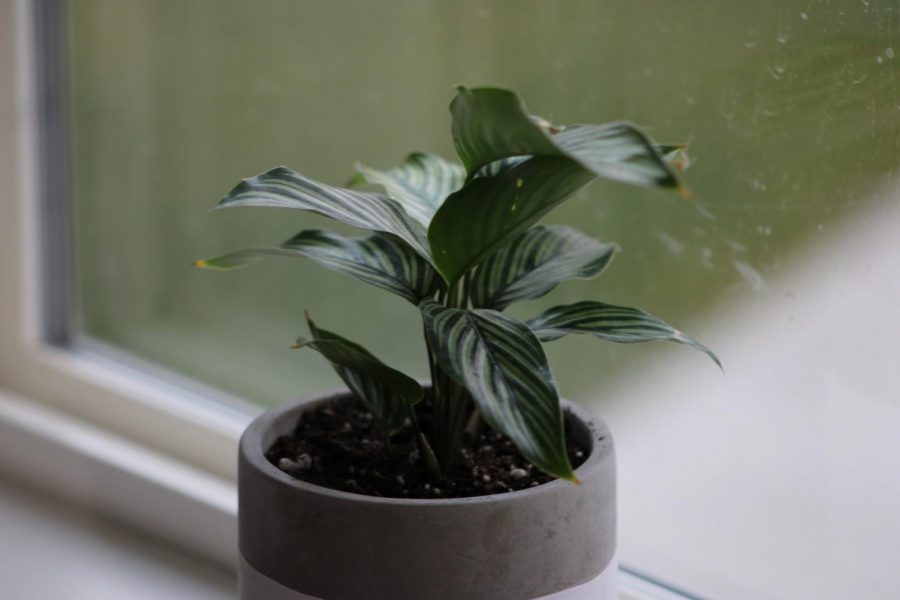Plant World: Calathea
This week’s plant is Calathea, known for being finicky; after trial run with them, they’re one of easiest plants to care for
Calathea Vittata has crispy leaves due to lack of humidity.
February 4, 2021
Welcome back, my plant friends. During these last two weeks, I went over some very easy-to-care-for plants that are very college student-friendly. However, this week, I wanted to share with you one of my favorite species of plants: the Calathea.
Calatheas are tropical plants, so that means they can be kind of finicky. They are not the easiest to satisfy, but once you get the hang of them, it’s smooth sailing the rest of the way.
Out of all the different types of calatheas, my favorites are the Calathea Lancifolia “Rattlesnake” and the Calathea Vittata. The Rattlesnake is known for its striking leaves: skinny, long, green with darker stripes. The most iconic part of the leaves is the way they move to follow the sun.
The Vittata’s leaves do not move as much as Rattlesnakes, but they do have much more significant coloring. They have dark green leaves, with bright white lines running through them.
These plants are known for crisping up and turning brown. They require high humidity, so the ideal place for them is next to a humidifier. I run mine for 12 to 14 hours during the day, and turn it off when I am turning off my grow lights. Once you figure out their humidity needs, they will most likely not crisp up.
Calatheas prefer to have damp soil, so do not over- or under-water these plants, or their leaves tend to turn brown.
After reading all this, these may seem like extremely high maintenance plants, but it’s all trial and error. My first calathea was the Calathea Stromanthe Triostar, a subspecies of the calathea. I struggled for the first two or three months with this plant, but once I figured out how to keep her soil damp, and to run the humidifier, she perked up and grew five new leaves.
Calatheas do not require bright light, they like indirect sunlight. Ideally, they should be put near an east-facing window, or directly in front of a north window. I have mine set up in a north-facing window with a grow light about two and a half feet above them.
There is no real way to propagate calatheas; you can’t just take a cutting and root in water, and it doesn’t grow pups. The only way is to separate the roots and plant in different pots.
But seriously, once you get the hang of these bad boys, you will not be able to stop buying them. Take it from me, I own more than plenty.


















